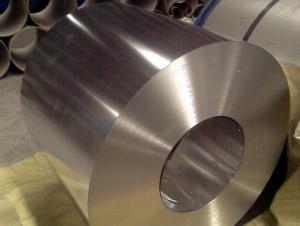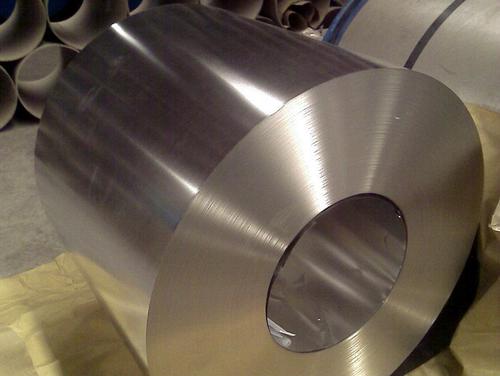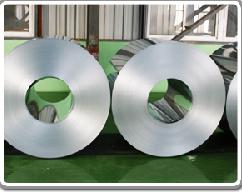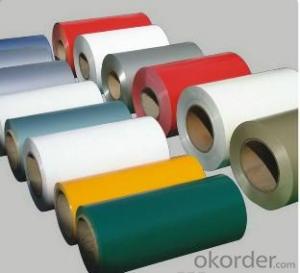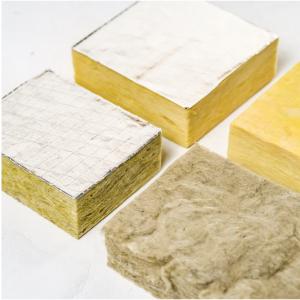Roll Coil Steel for Outside Walls Applied Galvalume Steel Coil
- Loading Port:
- China Main Port
- Payment Terms:
- TT OR LC
- Min Order Qty:
- -
- Supply Capability:
- -
OKorder Service Pledge
OKorder Financial Service
You Might Also Like
Quick Details
| Standard: | ASTM,BS,DIN,GB,JIS | Grade: | DX51D+AZ | Thickness: | 0.3-0.8mm |
| Place of Origin: | Jiangsu China (Mainland) | Brand Name: | Huaxi | Model Number: | DX51D+AZ |
| Type: | Steel Coil | Technique: | Cold Rolled | Surface Treatment: | Galvalume |
| Application: | Construction & Base Metal | Width: | 914-1250mm | Length: | Steel Coil |
| Description: | Galvalume Steel Coil | Base Metal: | DC01 | Available Dipped Layers: | 40-150G/M2 |
| Inner Diameter: | 508mm | Available Surface Treatment: | Passivating & Oiling & AFP & Filming | HS Code: | 72106100 |
| Approved Certificate: | ISO9001 & SGS |
Packaging & Delivery
| Packaging Detail: | Standard seaworthy packing for international delivery |
| Delivery Detail: | According to the exact quantity of your order |
Specifications
Galvalume Steel Coil
1.High Corrosion Resistance
2.Long Life Span
3.High Thermal Reflectivity
Outside Walls Applied Galvalume Steel Coil
Brief Introduction
The Galvalume Steel Coil is a kind of coated steel coil/sheet. With the cold rolled steel of different strength and thickness as substrate, it is produced through applying Al-Zn coat on both faces by hot dip process. In its coating, Al accounts for about 55%, Si 1.6%, while the remaining is Zn. It enjoys both the physical protective feature and durability of Al and the electrochemical protective property of Zn. And its surface has bright silver color and regular embossed-like figure, which are highly decorative.
- Q:What are the applications of steel coils in automotive manufacturing?
- Steel coils have a wide range of applications in automotive manufacturing due to their unique properties and characteristics. They are commonly used in various parts and components of vehicles, offering numerous benefits and contributing to the overall performance, safety, and reliability of automobiles. One of the primary applications of steel coils in automotive manufacturing is in the production of body panels. Steel coils are used to create the outer body structure of vehicles, including doors, hoods, fenders, and roofs. The high strength and durability of steel make it an ideal material for these components, as it provides protection against impacts and enhances the overall structural integrity of the vehicle. Steel coils are also used in the manufacturing of automotive chassis and frames. The strong and rigid nature of steel makes it an excellent choice for these critical components, as it can withstand heavy loads and provide stability to the vehicle. Steel coils ensure that the chassis and frames have the necessary strength and stiffness to support the weight of the vehicle and withstand the forces experienced during driving. Moreover, steel coils are utilized in the production of various suspension and steering components, such as springs, stabilizer bars, and control arms. These components require high strength and resistance to fatigue, as they are subjected to constant stress and vibrations. Steel coils provide the necessary toughness and flexibility to these parts, ensuring smooth and controlled vehicle handling. In addition, steel coils are used in the manufacturing of engine parts and exhaust systems. The high-temperature resistance and corrosion resistance of steel make it an ideal material for these applications. Steel coils are formed into various shapes, such as tubes and pipes, and used to create exhaust manifolds, catalytic converters, and mufflers. They play a crucial role in improving the performance and efficiency of the engine, as well as reducing harmful emissions. Overall, steel coils are vital in automotive manufacturing due to their strength, durability, and versatility. They are used in the production of body panels, chassis, suspension components, engine parts, and exhaust systems. The use of steel coils in these applications ensures that vehicles are safe, reliable, and perform optimally, making them an indispensable material in the automotive industry.
- Q:What are the different coil leveling line configurations used for steel coils?
- There are several different coil leveling line configurations used for steel coils, each designed to meet specific requirements and preferences in the steel industry. Some of the commonly used coil leveling line configurations include: 1. Straightener - This configuration consists of a straightening machine that is used to remove any coil shape defects or distortion. It typically features a series of rollers that apply pressure to the coil, gradually straightening it out. 2. Leveler - A leveler configuration is used to flatten the coil, ensuring a consistent thickness throughout. This configuration typically utilizes a series of rollers that apply pressure to the coil, flattening it out to the desired thickness. 3. Combination Straightener/Leveler - This configuration combines the functions of straightening and leveling into a single machine. It features a combination of rollers and straightening elements, allowing for both shape correction and thickness leveling in a single pass. 4. Looping Pit - In this configuration, the coil is fed into a looping pit, which allows for the accumulation of coils to be processed continuously. The looping pit provides a buffer between the entry and exit sections of the leveling line, enabling continuous operation and accommodating variations in coil supply and demand. 5. Tension Leveler - A tension leveler configuration applies tension to the coil during the leveling process. This tension helps to remove shape defects and ensures a flat, uniform surface. 6. Rotary Shear - This configuration incorporates a rotary shear that cuts the coil to the desired length after it has been leveled. The rotary shear is typically synchronized with the speed of the leveling line to ensure accurate and precise cutting. These are just a few examples of the different coil leveling line configurations used for steel coils. The choice of configuration depends on various factors such as the desired final product specifications, coil dimensions, processing speed requirements, and budget considerations.
- Q:What are the common transportation defects in steel coils?
- Common transportation defects in steel coils may include edge damage, surface scratches, deformation, and coil slippage. These defects can occur due to mishandling during loading, unloading, or transit, leading to potential quality issues and compromised structural integrity of the steel coils.
- Q:How do steel coils contribute to the manufacturing of HVAC systems?
- The manufacturing of HVAC systems heavily relies on steel coils, which have a critical role. These coils typically consist of high-quality steel, known for its exceptional strength, durability, and resistance to heat. Heat exchangers are one of the primary applications of steel coils in HVAC systems. These exchangers play a vital role in transferring heat between different mediums, usually air and a refrigerant. In HVAC systems, steel coils are employed in both the evaporator and condenser coils. The evaporator coil absorbs heat from the indoor air, while the condenser coil releases heat to the external environment. These coils are designed with numerous coiled tubes connected by fins. The use of steel in their construction ensures their ability to withstand high pressure and resist corrosion, guaranteeing the long-term reliability and efficiency of the HVAC system. Steel coils also contribute to the overall structural integrity of HVAC systems. They are commonly utilized in the fabrication of ductwork, responsible for distributing conditioned air throughout a building. The strength and rigidity of steel coils enable the ductwork to maintain its shape and structural integrity under various conditions, including high air pressure and temperature fluctuations. Additionally, steel coils are frequently involved in the fabrication of HVAC system cabinets and enclosures. These cabinets house several system components, including compressors, fans, and control panels. The robustness of steel coils ensures that the cabinets can withstand external forces, protect the internal components, and provide a secure housing for the entire HVAC system. To summarize, steel coils are crucial components in the manufacturing of HVAC systems. Their strength, durability, and heat resistance make them ideal for applications such as heat exchangers, ductwork, cabinets, and enclosures. By incorporating steel coils, HVAC manufacturers can produce systems that efficiently regulate temperature, enhance indoor air quality, and provide comfort in various residential, commercial, and industrial settings.
- Q:Can anyone please tell me what is the DUCTILE TO BRITTLE TRANSITION TEMPERATURE IN STEEL LOW CARBON?Thanks.
- Transition Temperature Of Steel
- Q:Are steel coils resistant to rust and corrosion?
- Yes, steel coils are typically resistant to rust and corrosion due to their protective coating or treatment that prevents the steel from coming into direct contact with moisture or oxygen.
- Q:Can steel coils be coated with epoxy?
- Yes, steel coils can be coated with epoxy. Epoxy coatings provide protection against corrosion and enhance the durability and lifespan of the steel coils.
- Q:If i get a samurai sword made of carbon steel, what is the hardest thing i can hit before it breaks? Or will it not break?
- Carbon steel is an alloy that is made up of the mixture of carbon and iron. In addition, several other elements with low maximum percentages are also included, such as manganese, with 1.65% maximum, silicon,with 0.60% maximum, and copper, with 0.60% maximum. Carbon Steel Pipe Fittings are utilized in a wide variety of applications across multiple industries. They are typically used in large shipyards, fabrication companies, chemical plants, oil refineries, machinery manufacturers, textile, and fluid transportation companies among others. They are highly cost-efficient and are much preferred over other fittings.
- Q:What are the dimensions of steel coils used in the HVAC industry?
- The dimensions of steel coils used in the HVAC industry can vary depending on the specific application and requirements of the system. However, there are standard dimensions that are commonly used. One common dimension for the width of steel coils used in HVAC systems is around 24 inches (or 2 feet). This width allows for efficient airflow and heat transfer within the system. The thickness of the steel coils can also vary, but a common range is between 0.020 inches to 0.060 inches. Thicker coils may be used for heavy-duty applications or systems that require higher performance, while thinner coils are suitable for lighter-duty or more cost-effective systems. As for the length of the coils, it can also vary depending on the specific needs of the HVAC system. Coils are often produced in standard lengths, such as 50 feet or 100 feet, but they can be customized to meet specific requirements. It is important to note that these dimensions are just general guidelines and can vary depending on the manufacturer, supplier, and specific HVAC system requirements. Consulting with industry professionals or manufacturers can provide more specific information on the dimensions of steel coils for a particular HVAC system.
- Q:Can steel coils be stored outdoors?
- Steel coils can be stored outdoors, but it is important to protect them from moisture and other environmental elements to prevent rust and damage.
1. Manufacturer Overview |
|
|---|---|
| Location | |
| Year Established | |
| Annual Output Value | |
| Main Markets | |
| Company Certifications | |
2. Manufacturer Certificates |
|
|---|---|
| a) Certification Name | |
| Range | |
| Reference | |
| Validity Period | |
3. Manufacturer Capability |
|
|---|---|
| a)Trade Capacity | |
| Nearest Port | |
| Export Percentage | |
| No.of Employees in Trade Department | |
| Language Spoken: | |
| b)Factory Information | |
| Factory Size: | |
| No. of Production Lines | |
| Contract Manufacturing | |
| Product Price Range | |
Send your message to us
Roll Coil Steel for Outside Walls Applied Galvalume Steel Coil
- Loading Port:
- China Main Port
- Payment Terms:
- TT OR LC
- Min Order Qty:
- -
- Supply Capability:
- -
OKorder Service Pledge
OKorder Financial Service
Similar products
New products
Hot products
Hot Searches
Related keywords
